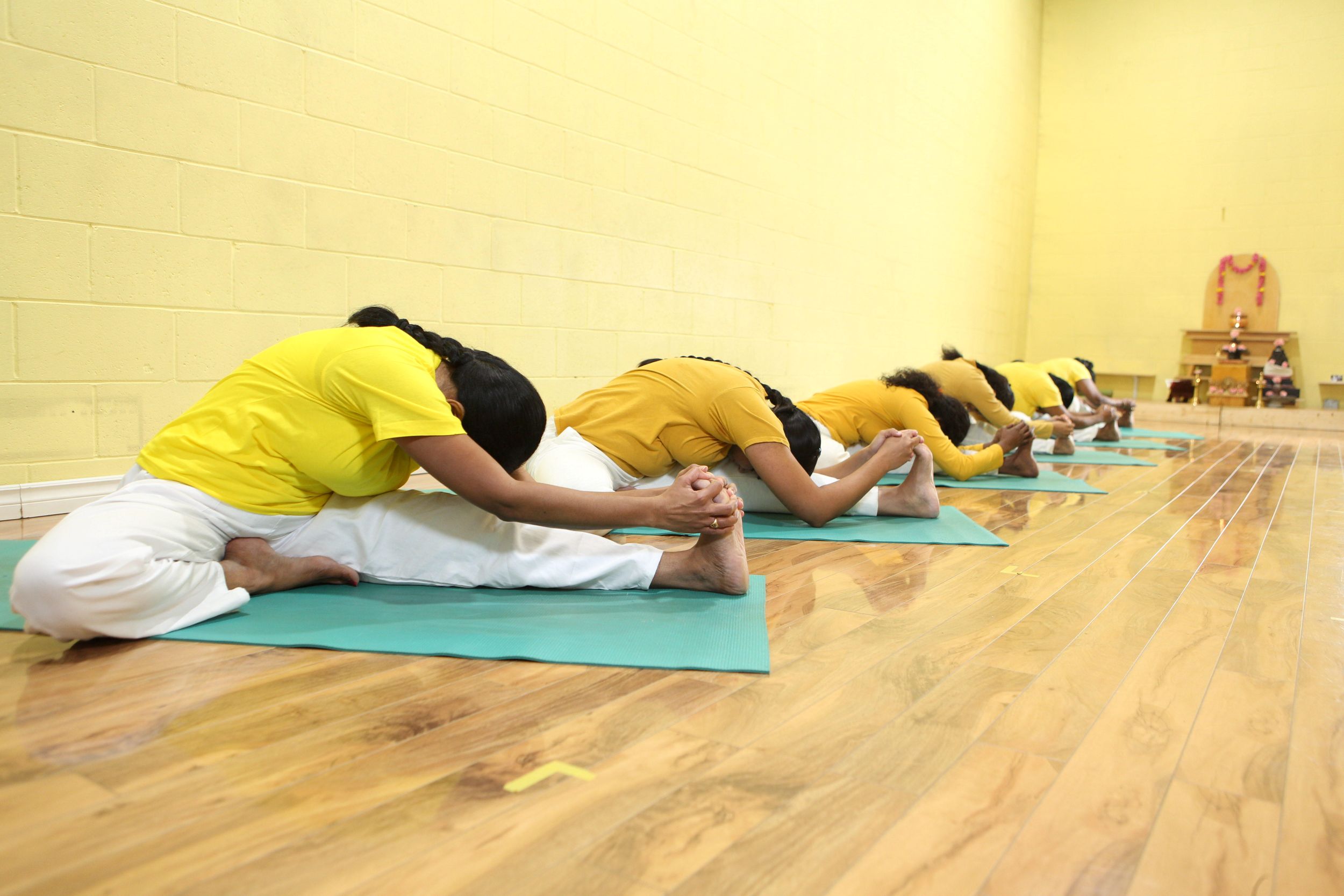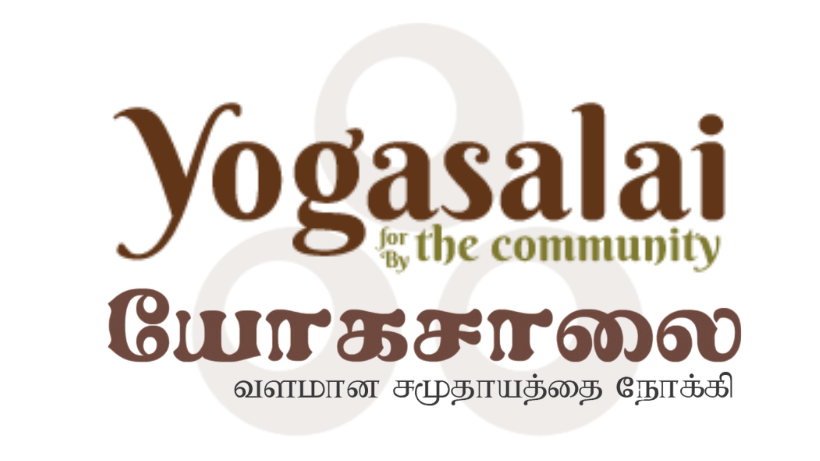
நாள் தோறும் யோகம் (Daily Yoga Practice)

யோகத்தின் அவசியம்
இன்றைய நாட்களில் யோகக்கலையானது எல்லோராலும் அறியப்பட்ட ஒன்றாகும். இது பலரால் பயிலப்படும் கலையாகவும் உள்ளது. ஆனாலும் அதனால் ஏற்படும் பலன்கள் பற்றிய ஐயப்பாடு ஓய்ந்தபாடில்லை.
யோகப்பயிற்சியின் பலன்களை உணர்வதற்கு அக்கலையின் ஒழுக்கங்களை உணர்ந்து கடைபிடித்தல் வேண்டும். யோகப்பயிற்சியினால் பலன் பெற நாங்கள் செய்ய வேண்டியது — தேர்ந்தெடுக்கப்பட்ட பயிற்சியை நாள் தவறாது எம்மால் நேரம் ஒதுக்கக் கூடிய அளவிற்கு செய்வதே ஆகும்.
இவ்வாறு செய்வதால் மட்டுமே இக்கலையின் தன்மையை உணர்ந்து அதன் நன்மைகளை அனுபவிக்க முடியும். ஒவ்வொரு நாள் பயிற்சிக்குப் பின்னரும் சிறிய அளவிலாவது உடல், மனம், சக்தி நிலைகளில் தேவையான பலனை உணர முடியும்.
பல ஆண்டுகள் பயிற்சி செய்வதன் மூலம் உடல், மனம், சக்திமண்டலத்தின் உயிறாற்றலின் தன்மையை மாற்றி அமைக்க முடியும் என்பதில் எந்தவித சந்தேகமும் இல்லை. இவ்வாறாக யோகப்பயிற்சியின் மூலம் எமது ஆற்றலின் உச்சநிலைத் தன்மைகளை உணர்ந்து அதை எமது ஆளுமைக்குள் கொண்டுவரவும் இயலும்.
உயிர் ஆற்றல் மற்றும் சமநிலை
உயிராற்றலின் உச்சக்கட்டத்தை உணர்ந்த பயிற்சியாளர் புறச்சூழ்நிலைகளின் தாக்கத்திலிருந்தும் தன்னைப் பாதுகாத்துக்கொள்ள முடியும்.
அத்துடன் நாம் தேர்ந்தெடுத்த செயல்களைச் செய்வதில் உள்ள எதிர்மறை ஆற்றலை நீக்கி புது உத்வேகத்துடன் செயல்பட தேவையான உயிர் ஆற்றலைப் பெற முடியும்.
இவ்வாறான ஒருவர் வெளிநிலை நிகழ்வுகளின் தாக்கத்தால் தன்னை மாற்றிக்கொள்ளாமல் தன் ஆளுமை நிலையை நிலைநிறுத்தி வாழ முடியும்.
இவ்வாறு செயலைச் செய்பவர் தம் உள்ளுணர்வின் உதவியுடன் நுணுக்கமான நிலையில் குறிப்பறிந்து செயல்படுவதால் தனது உடல், மனம், சக்தி மண்டலத்தையும் உயிர் ஆற்றலையும் பேண முடியும்.
யோகமும் நேர ஒழுக்கமும்
எம்மில் பெரும்பாலானோர் நேரம் மற்றும் காலத்தின் கைதிகளாகவே வாழ்க்கையை உணர்கின்றோம். இந்நிலையில் நீண்ட நேர ஓய்வும், பெரும் அளவிலான உணவும், நீண்ட நேர நித்திரையும் தேவைப்படுகின்றன. இதனால் நாம் பிராண சக்தியை இழக்கின்றோம்.
எளிமையான யோகப்பயிற்சியை ஒவ்வொரு நாளும் செய்வதன் மூலம் உயிர்சக்தியின் அளவை அதிகப்படுத்தலாம். இதன் விளைவாக உணவின் தேவை அளவும் நித்திரை அளவும் குறைகின்றது.
கேளிக்கைகள் மற்றும் ஆற்றல் இழப்பு
இன்றைய கேளிக்கை பொழுதுபோக்குகள் நேரத்தையும் சக்தியையும் பெருமளவில் வீணாக்குகின்றன. அவை உடல், மனம் மற்றும் சக்திமண்டலத்தையும் பாதிக்கின்றன. இதனால் புலனுணர்வு மங்கிவிடுகிறது, குழப்பம் அதிகரிக்கிறது.
யோகப்பயிற்சி இதற்கு மாற்றாக நம்மை புத்துணர்ச்சி, தெளிவு மற்றும் சீரான ஆற்றலுடன் வைத்திருக்கிறது.
யோகாவில் உணவு முறை
உணவு எமது உயிர் சக்தியை நிர்ணயிக்கும் முக்கிய அம்சம். யோகக்கலை நூல்களில் கூறப்பட்ட சில முக்கிய உணவு வழிமுறைகள்:
- காலையில் தண்ணீர் அருந்துதல் — வாத, பித்த, கப நிலைகளை சமப்படுத்தும்.
- உணவுக்குப் பிறகு முழுமையாக ஜீரணமடைந்த பின் அடுத்த உணவை எடுத்துக்கொள்ளுதல்.
- வயிற்றை அரைவாசி உணவு, கால்வாசி நீர், கால்வாசி வெறுமையாக வைத்துக்கொள்ளுதல்.
- பிராண சக்தி அதிகம் உள்ள உணவுகளை உட்கொள்ளுதல்.
- மனதின் தன்மை உணவின் தன்மையால் பாதிக்கப்படும்.
- ஒவ்வொருவரும் தம் உடலுக்கு ஏற்ப உணவு தேர்ந்தெடுத்தல் அவசியம்.
நாள்தோறும் யோகப்பயிற்சி செய்பவர்கள் குறைந்த அளவிலான உணவினாலும் பூரண ஆற்றலைப் பெறுகின்றனர் — இது மூச்சின் ஒழுங்கு மற்றும் பிராண ஓட்டத்தின் சீரான நிலை காரணமாகும்.
பிராணயாமத்தின் முக்கியத்துவம்
மூச்சே உடல், மனம், உயிரை இணைக்கும் பாலமாகும். மூச்சு ஒழுங்குபடுத்தப்படும்போது பிராண சக்தி பெருகி அதன் ஓட்டம் சமநிலைப்படுத்தப்படுகிறது.
யோகாசனங்களை பிற உடற்பயிற்சிகளில் இருந்து வேறுபடுத்துவது மூச்சில் கவனம் செலுத்துவதே ஆகும். ஒவ்வொரு யோகா வகுப்பிலும் 2–3 வித மூச்சுப் பயிற்சிகள் இடம்பெறும். ஆசனம், தியானம், ஓய்வு ஆகியவை அதனைத் தொடர்ந்து வருகின்றன.
மூச்சுப் பயிற்சி மனத்தின் இயக்கத்தையும் எண்ணங்களையும் கட்டுப்படுத்தி நேர்மறை ஆற்றலை உருவாக்குகிறது.
பிராண சக்தி மற்றும் மனம்
மூச்சு, மனம், பிராண சக்தி — இவை ஒன்றை ஒன்று சார்ந்தவை. மனம் அமைதியாக இருந்தால் பிராண சக்தி வீணாகாது; பிராண சக்தி சமநிலையில் இருந்தால் மனம் அமைதியாக இருக்கும்.
இதனால் உடலின் உள் உறுப்புகள் சீராக இயங்கி நோயற்ற வாழ்வு அமையும்.
தினசரி ஆசனங்கள்
- உட்கட்டாசனம் (Chair Pose)
- நேராக நின்று, மூச்சை உள்ளே எடுத்து கைகளை மேலே தூக்கி முழங்கால்களை மடிக்கவும்.
- இயல்பாக சுவாசித்து 10 எண்ணிக்கைக்கு நிற்கவும். 3 முறை செய்யவும்.
- நேராக நின்று, மூச்சை உள்ளே எடுத்து கைகளை மேலே தூக்கி முழங்கால்களை மடிக்கவும்.
- நின்று முன்னால் வளையும் ஆசனம் (Standing Forward Bend)
- கால்களை ஒன்றாக வைத்து, முழங்கால்களை நேராக வைத்து, மூச்சை வெளியே விடவும்.
- முப்பது வினாடிகள் நிலைநிறுத்தவும்.
- கால்களை ஒன்றாக வைத்து, முழங்கால்களை நேராக வைத்து, மூச்சை வெளியே விடவும்.
- குதிரை ஆசனம் (Ashwa Sanchalanasana)
- வலது காலைப் பின்னால் நீட்டி முழங்காலை நிலத்தில் வைத்து, பத்து வினாடிகள் நிற்கவும்.
- பின்பு இடது பக்கம் இதேபோல் செய்யவும்.
- வலது காலைப் பின்னால் நீட்டி முழங்காலை நிலத்தில் வைத்து, பத்து வினாடிகள் நிற்கவும்.
- புலி ஆசனம் (Ardha Matsyendrasana Variation)
- இடது கால் மடக்கி, வலது கால் அதை கடந்து வைக்கவும்.
- வலதுபுறம் திரும்பி 30 வினாடிகள் சுவாசிக்கவும். இருபுறமும் செய்யவும்.
- இடது கால் மடக்கி, வலது கால் அதை கடந்து வைக்கவும்.
நாடி சுத்திகரிப்பு (Alternate Nostril Breathing)
பத்மாசனம் அல்லது சுகாசனத்தில் அமர்ந்து, இடது துவாரத்தால் மூச்சை இழுத்து, வலது துவாரத்தால் வெளியே விடவும். பின்னர் வலது துவாரத்தால் இழுத்து, இடது துவாரத்தால் வெளியே விடவும் — இது ஒரு சுற்று.
- வெறும் வயிற்றில் செய்யவேண்டும்.
- மெதுவாகவும் ஆழமாகவும் மூச்சை எடுத்து விட வேண்டும்.
- தினமும் 6–10 சுற்றுகள் செய்யலாம்.
சவாசனம் (Relaxation Pose)
சவாசனம் முழுமையான ஓய்வை வழங்கும் முக்கிய ஆசனம்.
முதுகில் படுத்து, கைகளையும் கால்களையும் சிறிது அகட்டி, உள்ளங்கைகளை மேல்நோக்கி வைத்துக் கொள்ளவும். உடலின் ஒவ்வொரு உறுப்பையும் மனதினால் ஓய்வுறச் செய்யும் விழிப்புணர்வுடன் இருங்கள்.
இது பலமணி நேர நித்திரையை விட அதிக பலனைத் தரும். ஒவ்வொரு யோகா அமர்வின் முடிவிலும் 5–15 நிமிடங்கள் சவாசனத்தில் ஓய்வெடுப்பது அவசியம்.
தியானத்திற்கு முன்படை
ஒழுங்கான ஓய்வு மற்றும் மன அமைதி தியானத்திற்கான அடித்தளம் ஆகும். இதன் மூலம் மனம் ஒருமைப்பாட்டை அடைந்து தெளிவாகச் செயல்படும்.
முடிவுரை
யோகப்பயிற்சி ஒரு நம்பிக்கையல்ல — அது ஒரு விஞ்ஞானம்.
உடலை பூத உடல், சூக்கும உடல், காரண உடல் என மூன்று நிலைகளில் அணுகும் இக்கலை, நம்மை உடல்–மனம்–ஆவி என்ற முழுமையான ஒருமைப்பாட்டுக்குக் கொண்டுசெல்லும்.
நாள் தோறும் சிறிதளவேனும் யோகத்தைப் பயிற்சி செய்தால், நம் வாழ்க்கை, சிந்தனை, ஆற்றல் அனைத்திலும் மாற்றம் நிகழும்.
Daily Yoga Practice
In today’s world, the art of Yoga has become widely known and practiced by many. Yet, doubts still linger about the true benefits that Yoga brings. To experience its full value, one must understand and follow the discipline that this ancient science requires.
To gain real benefit from yoga, one must choose a set of practices and perform them every day without fail, for a duration that fits within one’s available time. Only through consistent daily practice can we truly experience the essence of Yoga and its transforming power.
After each day’s practice, even in a small way — physically, mentally, or energetically — we begin to feel tangible benefits. Over years of consistent training, our body, mind, and energy system (vital force) gradually transform. Through Yoga, it becomes possible to experience the highest states of our life energy and to integrate that elevated awareness into our personality.
A person who experiences this peak energy state can protect themselves from the influences of the external environment and the events happening around them. At the same time, they gain renewed vitality, which helps remove inner resistance and negative tendencies when engaging in chosen actions.
Such a person, no longer reacting to life’s outer circumstances, learns to live as a master of their own personality through the support of vital energy (prana). With this awareness, one learns to act consciously and precisely according to the nature of their surroundings — maintaining balance in body, mind, and energy.
Our culture and yogic tradition have long affirmed that through such disciplined practice, one can ultimately attain moksha — liberation or supreme realization. Most of us, however, live as captives of time and routine. Because of this, we often feel the need for long rest, heavy food, or extended sleep. These habits gradually drain our life force.
As a result, we often feel that there isn’t enough time to do what we wish to do. But by engaging in even simple yogic practices daily, we increase our life energy. Consequently, our need for food and sleep decreases naturally, due to the balanced functioning of prana.
We often seek entertainment to relax or free our mind from work. Yet, modern forms of entertainment consume large amounts of time and energy and disturb the natural balance of our energy system, dulling our senses. Many such habits make us dependent, weaken our energy, and cloud our intellect — leading to confusion, waste of energy, and waste of time.
Yogic Diet
Food is essential for survival, but the quality and manner in which we eat directly influence our pranic energy and the state of our body and mind. Thus, how, when, and what we eat are all important. The yogic scriptures provide detailed guidance about diet — including compatible and incompatible food combinations, and how to avoid what does not suit our constitution.
A few simple and vital points include:
- Drinking water in the morning helps balance the body’s vata, pitta, and kapha elements.
- Eat the next meal only after the previous one is fully digested.
- Keep the stomach half full with food, one-quarter with water, and leave one-quarter empty.
- Eat foods rich in pranic energy.
- The nature of our food directly affects the nature and clarity of our mind.
- Each person must eat according to their body’s unique constitution.
Those who practice yoga daily tend to eat lightly and moderately. During yoga, due to the regulated breathing, pranic energy increases and flows freely through the system, improving digestion and energy absorption.
The Importance of Pranayama
Breath is the thread that connects the body, mind, and life. When breath leaves us, mind and body also depart. Breath itself is prana — the vital energy.
Yet, most people neither reflect upon nor understand the nature of their breathing. Our strength and vitality depend on breath. Through daily yoga practice, breath becomes regulated, pranic energy increases, and its flow becomes smooth and balanced.
What distinguishes yogic postures (asanas) from ordinary physical exercises is the awareness of breath. Each movement in yoga is synchronized with breath. This is one reason why yoga should be learned from a qualified teacher.
Just as the body is used in asana practice, the breath is used in various breathing techniques. Every yoga session includes at least two or three forms of pranayama, followed by asanas, meditation, and relaxation.
Hence, pranayama holds a central place in all yogic disciplines. Daily yoga should always include breathing exercises.
The movement of the mind is closely tied to the rhythm of breath. Prana enables the mind to perceive through the five senses — to see, hear, taste, smell, and feel. It also allows us to interpret what we perceive and to make decisions clearly through the intellect.
When prana decreases, confidence weakens and the mind becomes restless. When prana is strong, we gain clarity and decisiveness. When making beneficial decisions, we also develop the awareness of how our choices affect those around us. All this happens through the power of prana.
If prana is low or its flow is obstructed, we cannot act with full energy or make sound decisions. Therefore, it is essential to learn how to increase and preserve pranic energy.
We absorb prana from food, water, sunlight, and air. Equally important is learning how to protect and expand that energy. Breath, mind, and prana function together — when the mind is calm, prana is conserved; when prana is balanced, the mind remains peaceful, and breath becomes steady. This internal harmony promotes health and freedom from disease.
Prana is the core principle of yoga. Every yogic practice — whether asana, pranayama, or meditation — is designed to enhance and regulate prana. When balanced, it influences our thoughts, removes negativity, nurtures positive vibrations, and creates harmony around us.
In Tamil culture and tradition, this understanding of pranic energy has long been woven into daily life — through practices that promote balance, clarity, and vitality.
Simple Daily Practices
- Utkatasana (Chair Pose):
Stand with feet hip-width apart (or together). Inhale and raise the arms overhead in prayer position. Exhale, bend the knees deeply, and hold for ten counts, breathing naturally. Repeat three times. - Standing Forward Bend (Padahastasana):
Stand with feet together and legs straight. Exhale and bend forward from the hips, keeping the spine long. Hold for thirty seconds, breathing calmly. - Ashwa Sanchalanasana (Horse Pose):
From the forward bend, inhale and step the right leg back, placing the knee on the floor and pressing the toes down. Hold for 10–15 seconds. Exhale and step forward. Repeat with the left leg. - Ardha Matsyendrasana (Half Spinal Twist / Tiger Pose Variation):
Sit with the left leg bent, right foot placed outside the left thigh. Exhale, twist to the right, using the left hand to hold the right knee. Keep the spine tall and breathe evenly for 30 seconds. Repeat on the other side.
Nadi Shuddhi (Alternate Nostril Breathing)
This practice purifies the energy channels (nadis) through which prana flows. Sit in a comfortable meditative posture (Padmasana, Siddhasana, or Sukhasana). Using the right hand in Vishnu Mudra, close the right nostril with the thumb, inhale through the left nostril, exhale through the right, then inhale through the right and exhale through the left. This completes one round. Practice 6–10 rounds daily.
Guidelines:
- Practice on an empty stomach, ideally after cleansing the bowels.
- Breathe slowly, deeply, and evenly.
- The left channel is cooling; the right is heating. The goal is to balance both.
Savasana (Deep Relaxation Pose)
Among daily practices, proper relaxation is most essential. Often, our inability to recover energy comes from a lack of proper rest. Neither sleep nor casual rest can replace true yogic relaxation.
In Savasana, lie flat on your back with legs and arms slightly apart, palms facing upward. Keep the mind alert and focus on each body part, consciously releasing tension from toes to head. This aware relaxation gives more benefit than several hours of sleep — leaving the body fresh, pain-free, and rejuvenated.
After each asana or pranayama session, a few minutes of relaxation is necessary. At the end of practice, remain in Savasana for 5 to 15 minutes.
In our busy modern lives, such focused relaxation is invaluable — conserving time and energy while revealing the state of the body and mind each day. Gradual daily practice stabilizes the mind and prepares one for meditation. Through this, both body and mind become harmonized, and the breath steady.
Conclusion
Yoga practice is a science — not just a belief system. It is best understood not by excessive reading, but through consistent daily practice and by living the yogic way of life. When learned correctly, it reveals itself as a practical, rational, and timeless science — free from dogma or dependence on belief.
Yoga views the body as a temple, and as the vehicle that carries the life force. It recognizes the three bodies —
- the physical body (perceptible),
- the subtle body (mind, intellect, and energy), and
- the causal body (the root of existence).
Practices are structured to influence all three simultaneously. For thousands of years, countless people have benefited from this science. Its survival through time is itself proof of its power.
The purpose of this article is to encourage everyone to practice at least a little yoga daily and experience its immense benefits.


